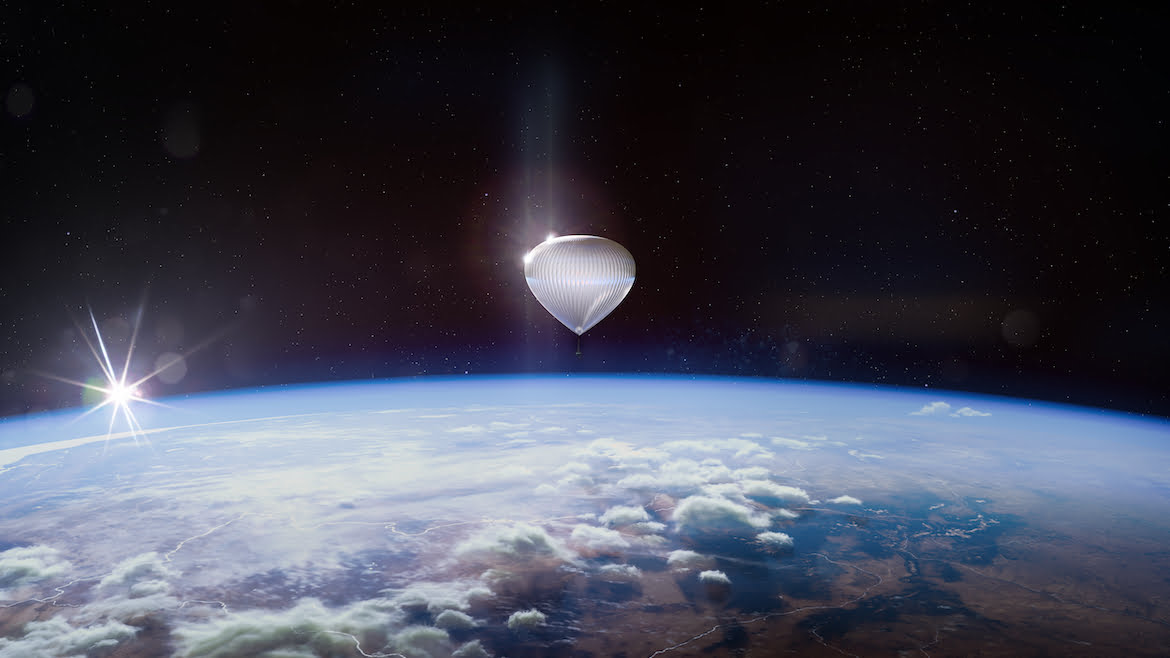World View: The Future of Exploration is Up in the Stratosphere
17/02/2024

Alright folks, get ready for a bird’s-eye view unlike anything you’ve seen before. We’re not talking drones, planes, or even satellites. We’re talking World View – a company that’s taking us to the stratosphere with some seriously cool balloon technology.
These Ain’t Your Average Party Balloons
First off, these balloons are massive. We’re talking the length of a football field! The material? Not latex, that’s for sure. It’s a super thin, super strong polyethylene that allows the balloon to expand as it climbs higher and higher into near-space conditions. Of course, they’re filled with good old helium to give them lift. Imagine this giant, shimmering orb carrying cutting-edge sensor packages up to the thin blue line over 100,000 feet (30 km) above Earth.
Why Go So High?
Three words: Resolution, resolution, resolution. From that vantage point, World View isn’t just snapping pretty pictures. They’re capturing super-detailed imagery and gathering data that has huge implications. We’re talking crop health monitoring for farmers, spotting energy infrastructure problems before they happen, keeping eyes on our oceans, and even aiding governments with things like weather forecasting and research. It’s like being handed a magnifying glass for the entire planet.
Beyond Just Data
The coolest part? World View is just getting started. They’re working on methane detection to combat emissions, payload experiments for all sorts of scientific studies, and get this – space tourism. Yep, they’re planning luxurious pressurized capsules that’ll gently carry passengers to the edge of space for a view that’ll redefine ‘breathtaking’.
Now, World View isn’t a replacement for satellites, but it’s an amazing supplement. Cheaper to launch, capable of lingering over targeted areas longer, and they offer data at a super high resolution. This is game-changing tech right here, folks. If you ask me, this is a company worth keeping an eye on; they’re pushing the boundaries of what we can see and do from the stratosphere.
The Brains Behind the Balloons
It takes serious smarts to pull off something like World View. This isn’t a garage startup – it’s a team packed with space industry legends and brilliant minds. You’ve got Jane Poynter and Taber MacCallum, who if those names sound familiar, it’s because they were part of the original Biosphere 2 crew – yeah, the folks who lived in a sealed environment for two years in the ’90s. These people get the whole “closed system” idea, crucial for those space tourism pods.
Then there’s Alan Stern – ring a bell? He’s the principal investigator for NASA’s New Horizons mission that gave us those awesome Pluto flyby images. This guy knows deep space exploration. Oh, and Mark Kelly, former NASA astronaut, rounds out the founding crew.
You think that’s it? Nope. Ryan Hartman, CEO, is an aerospace heavyweight who led Insitu (part of Boeing now), specializing in unmanned aircraft. These folks have credentials stacked higher than a launchpad!
From Big Dreams to Bigger Balloons
World View didn’t pop out of the blue. They were founded way back in 2012, inspired in part by Paragon Space Development Corporation, another company Poynter and MacCallum had a hand in, focusing on life support for extreme environments. See, it wasn’t just about a cool new way to take selfies; it was about making the stratosphere accessible for science, industry, and maybe even regular folks like us.
Today, this team isn’t messing around. They’ve got their own manufacturing facility and launch site. These aren’t weekend hobby balloons; they’re the real deal. With patents on stratospheric navigation tech, partnerships for serious research… World View is proving that sometimes the most audacious ideas do fly.